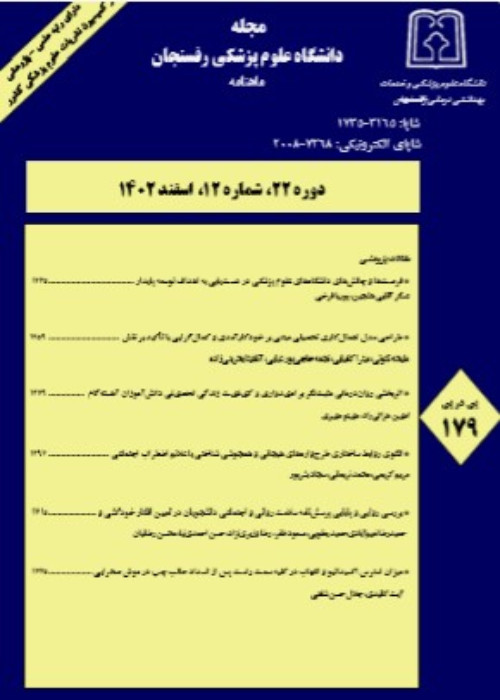The Investigation of the Effect of Rehabilitation Program on the Spastic Diplegia Patient's Oxygen Pulse and Aerobic Capacity
Author(s):
Abstract:
Background And Objective
Despite the voluminous amount of studies in the field of exercise sciences over the past three decades, there remains a paucity of information on the activity patterns and physiological responses to exercise in people with disability. The aim of this study was to investigate the effect of an exercise-rehabilitation aerobic program on the cardiovascular fitness, maximal oxygen uptake (VO2 max) and oxygen pulse for children with spastic cerebral palsy (Diplegia) and their comparison with healthy children. Materials And Methods
The experimental group for this semiexperimental study comprised of 18 (10-14 years old) diplegic spastic cerebral palsy children (CP) with average hight (131 ± 6.34 cm) and weight (29.83 ± 5.64 Kg) selected with the consent of their parents as well as specialist physician. Eighteen normal children were randomly designated as the control group. The variables of the experimental group were measured before and after the exercise-rehabilitation program according to Mac Master protocol on cycle ergometer at the laboratory conditions. Then these values were compaired with those of the control group. The experimental group performed exercise program for a period of three months, three times a week with intensity average 144 bpm of heart rate. Each session lasted 20-25 minutes for each subject. Results
The exercise-rehabilitation program led to enhancement of the maximal oxygen uptake (VO2 max) at the patient group. The oxygen pulse (VO2/HR) of the patient group was significantly lower than that of the normal group and the exercise program improved this variable (p<0.05). Conclusion
This study indicated that in the spastic patients the lack of activity and being sedentary for a long time increases spasticity, the involuntary movements lead to a decrease in cardiovascular fitness and aerobic capasity and an increase in energy cost during exercise or daily activity as compared with normal people. The Rehabilitation program and exercise, even for short time or at low intensity leads to an improvement in the variables under study and enhances cardiovascular efficiency in these patients.Keywords:
Language:
Persian
Published:
Journal of Rafsanjan University Of Medical Sciences, Volume:6 Issue: 1, 2007
Pages:
45 to 52
magiran.com/p447798
دانلود و مطالعه متن این مقاله با یکی از روشهای زیر امکان پذیر است:
اشتراک شخصی
با عضویت و پرداخت آنلاین حق اشتراک یکساله به مبلغ 1,390,000ريال میتوانید 70 عنوان مطلب دانلود کنید!
اشتراک سازمانی
به کتابخانه دانشگاه یا محل کار خود پیشنهاد کنید تا اشتراک سازمانی این پایگاه را برای دسترسی نامحدود همه کاربران به متن مطالب تهیه نمایند!
توجه!
- حق عضویت دریافتی صرف حمایت از نشریات عضو و نگهداری، تکمیل و توسعه مگیران میشود.
- پرداخت حق اشتراک و دانلود مقالات اجازه بازنشر آن در سایر رسانههای چاپی و دیجیتال را به کاربر نمیدهد.
In order to view content subscription is required
Personal subscription
Subscribe magiran.com for 70 € euros via PayPal and download 70 articles during a year.
Organization subscription
Please contact us to subscribe your university or library for unlimited access!


